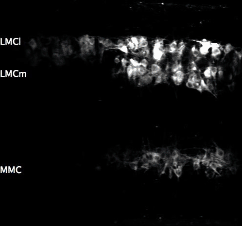Research


Spinal cord cell types
Integration of descending commands with sensory feedback is mediated by genetically-diverse subpopulations of neurons within the spinal cord. It took evolution approximately 400 million years to evolve limbs and the accompanying neuronal types to regulate them. We use bioinformatics to characterize the data from single cell RNA sequencing and spatial transcriptomics in order to define spinal neuron populations, with a particular view toward understanding how the diversity of cell types arose from an evolutionary perspective.

Spinal neuron connectivity
While we have a rudimentary understanding of spinal motor circuits, it remains unclear how highly interconnected heterogenous populations of neurons within the spinal cord compute the precise control of movements. To investigate this we use genetic-labeling and viral tracing techniques to define the connections between neurons as a start to understanding the pathways for information flow through spinal systems.

Neuron function- Behavior
The regulation of limb movements requires precise coordination of multiple muscle groups controlling multiple joints. In one view spinal circuits have dedicated circuit modules for different behaviors. Alternatively, the same neuronal circuits are capable of controlling many different independent motor behaviors using different muscle combinations. To understand how spinal circuits are functionally organized we use mouse genetic and viral tools to manipulate specific subpopulations of neuronal activity while accessing a range of motor behaviors.

Neuron function- Neural activity
What is the pattern of neural activity in the spinal cord during different motor behaviors? To address this we have collaborated with investigators at Rice University to develop a new generation of flexible recording electrodes that can monitor spinal neuron firing in awake behaving mice. We are using this new technology to investigate the patterns of neural activity underlying volitional and subconsciously-generated movements.

Autonomic circuitry
The spinal cord is the final relay center for controlling muscle activity as well as regulating autonomic responses for organs and tissues, such as heart rate and blood vessel dilation when nervous. Since the systems for muscle control and autonomic control have parallels in the spinal cord we are investigating the autonomic neural pathways to compare and contrast with the circuits for motor control.

Motor diseases
Motor neuron degeneration in diseases such as amyotrophic lateral sclerosis (ALS) has been linked to mutations in ~40 different genes, which counterintuitively often encode proteins that are ubiquitous. To determine if there is a common link between the different genetic pathways linked to motor degeneration we have investigated the role microRNAs play in maintaining motor neuron function.

RNA-systems for controlling gene expression and treating diseases
While RNA intramolecular cis-splicing is a reaction common to every eukaryotic cell type, RNA intermolecular trans-splicing is uncommon. We uncovered a novel method for efficiently mediating RNA trans-splicing leading to a new generation of synthetic biology tools for controlling gene expression. This system is currently being used to develop gene therapy vectors for genetic diseases that have previously been untreatable because of vector limitations.